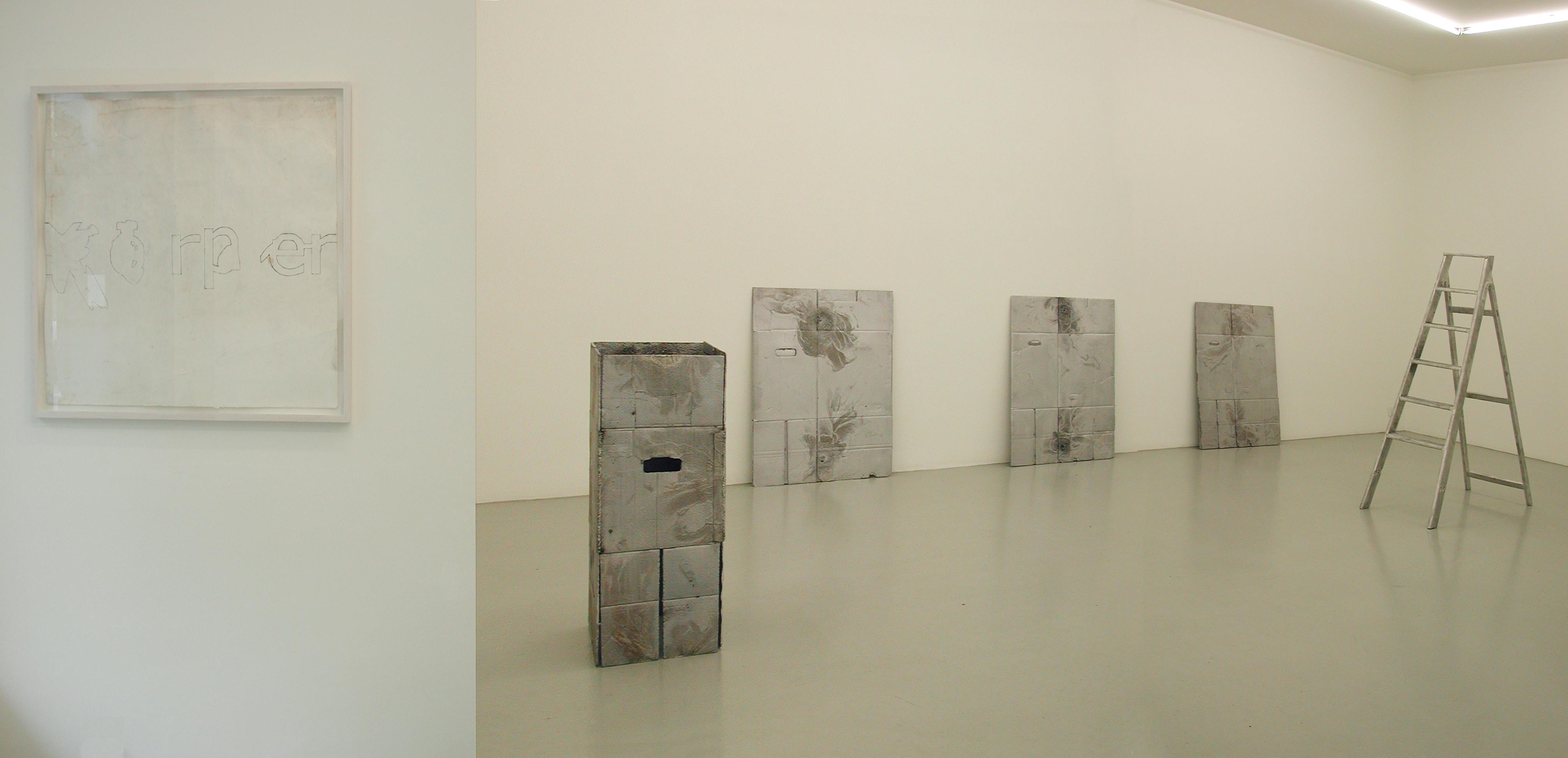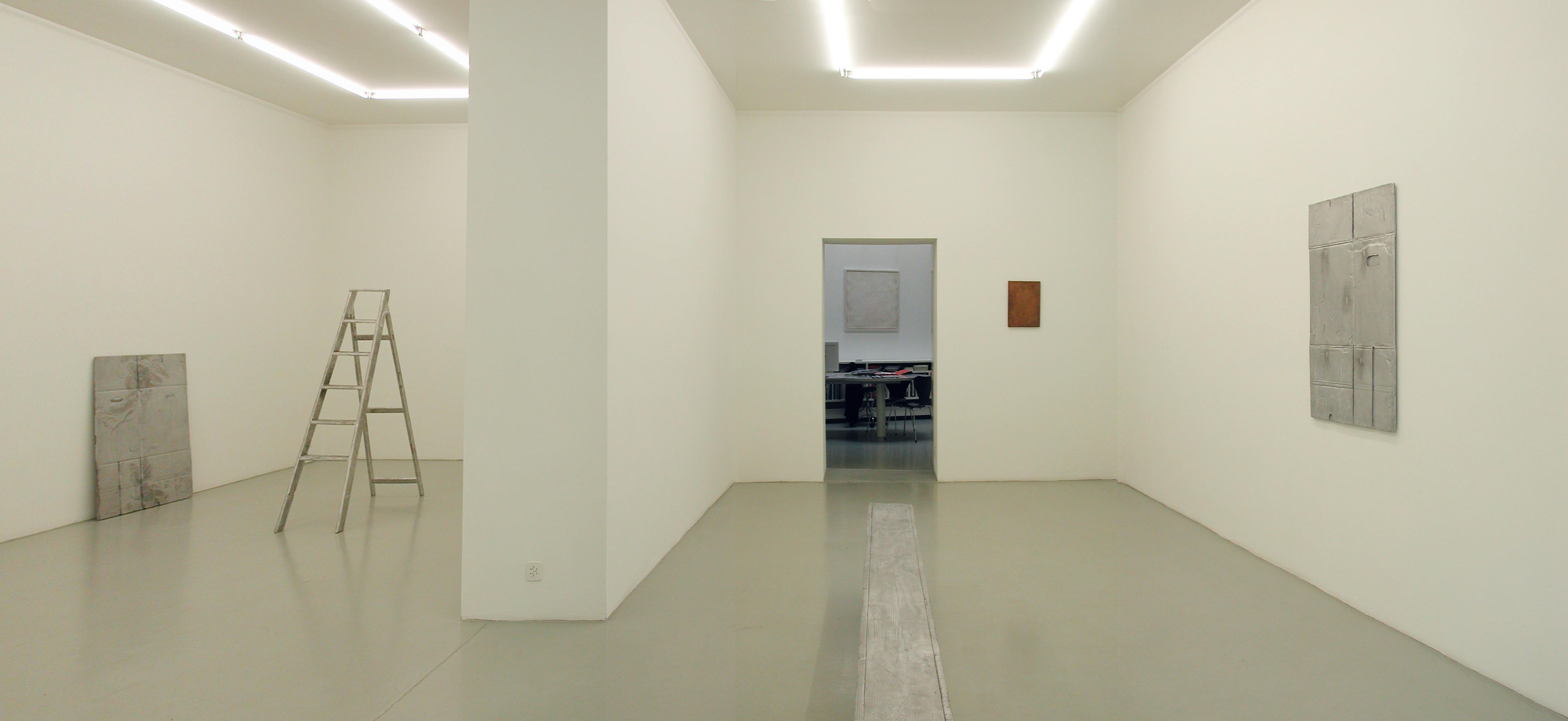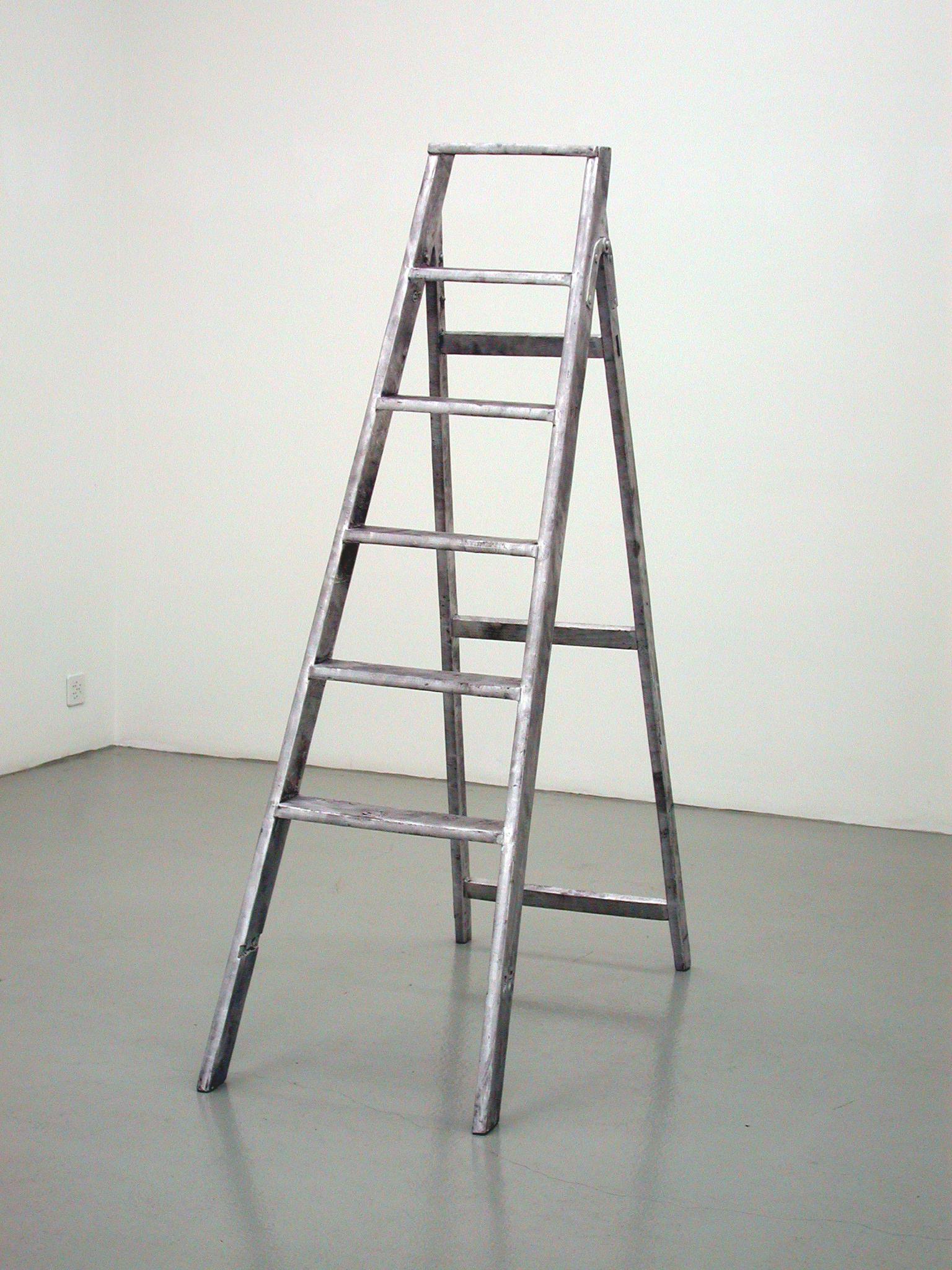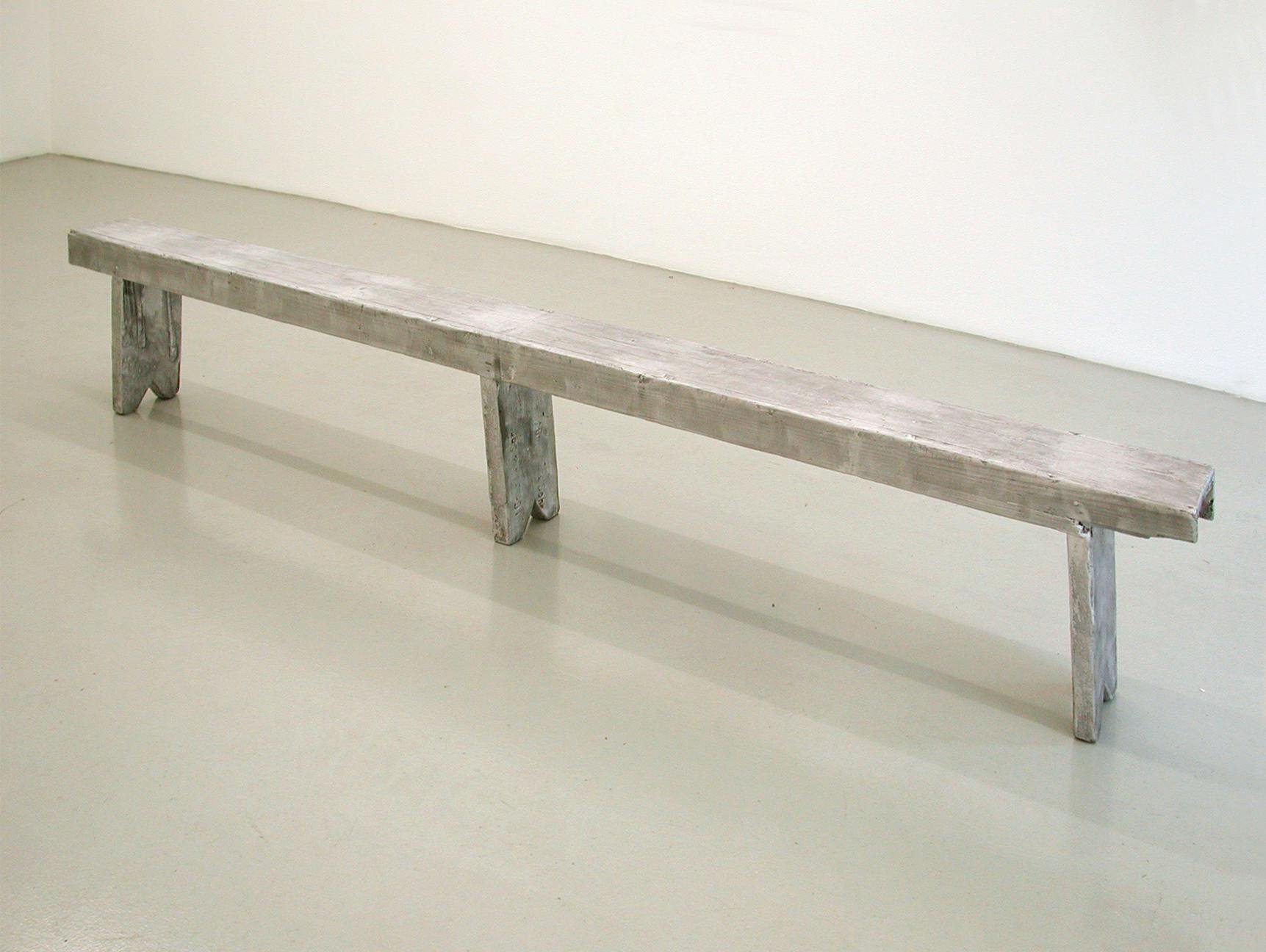We have great pleasure in presenting works by the Berlin-based artist Jürgen Drescher (*1955 in Karlsruhe) for the first time.
Through the media of sculpture, installation, drawing and films, Jürgen Drescher has been concerned with the role of the artist in society and the economy and the social and political potential of art for many years, and he has taken such discourses as themes during his teaching activities at various German art academies. He now presents a group of new sculptures in the two large rooms of the Mai 36 Galerie: a ladder, cardboard boxes, a bench, and a picture. These objects, cast 1:1 in aluminium, are complemented by drawings, and, in the rear room of the gallery, by two film loops.
The exhibited aluminium sculptures represent a marked development in the artist's work. Unlike Drescher's previous works which – in addition to the often somewhat flamboyant inclusion of aphorisms, confessions, questioning and challenging words were characterised above all by the personal processing and new assembly of found objects or unspectacular, but frequently symbolic articles and materials from the artist's own environment – the aluminium sculptures, while alluding to concrete and everyday objects in the artist's possession, also go considerably further since the production technique of casting turns them into "pure", independent works of art.
A closer look at the works installed in the gallery like classical sculptures without any concrete reference to the place, works that elude any formalism of design or aesthetics of the ready-made, makes it clear that Jürgen Drescher's intentions go beyond the mere exhibition of self-referential works of art.
The artist casts materially valueless and worn out commodities made of malleable materials such as wood and paper in aluminium, thereby making them not only more stable and enduring, but also, and primarily, elevating them and their condition, which he conserves, onto a different level, thus giving the observer the chance of seeing the objects, barely noticed in everyday life, in a new light. The ladder, the box, the bench and the picture are not just objects charged with meaning and symbolism, they also refer to characteristic aspects of the artist's life. Thus removal boxes stand for mobility and change, at the same time serving as transport containers for contents and messages. The ladder is on the one hand an important working tool, on the other a symbol of ascent and descent. We speak of "Jacob's Ladder" (to heaven) and of the "Steps to Knowledge”, but the same ladder can also lead down into a bottomless abyss. The bench provides a platform for communication and dialogue, and also an invitation to relax and be idle. The (canvas) picture represents a typical and at the same time universally valid object of art.
Drescher's artistic decision not always to improve upon the partial discoloration of his cast objects and visibly welded joints shows that he does not aim to produce flawless sculptures, or fetishised commodities. What he intends is deliberately to incorporate the accidental traces of the production process in addition to the signs of wear already present in the objects. The reproduction and representation of the objects as used, damaged or non-functional – the boxes are stiff and heavy and depicted as being "bottomless" and thus unable to hold any meaningful content; the ladder has a missing rung, and the cast canvas picture evidences no motif – means that their function, and thus also the potential ascribed to art of conveying specific meanings, is disputed. At the same time, the question is raised of whether perfection, constant forward movement and rectilinearity are always a valid guarantee of "good" or "genuine" art.
The large-format colourless sheets of blotting paper with the pencilled concepts "Körper" ("body"), "Ruhe" ("quietness") and "politisch" ("political"), and the bright red, explosive term "Ökozid" ("ecocide") complement the horizon of the sculptures and provide the observer with concrete written references. In both videos, "Kutsche" ("coach") and "Wasserfall" ("waterfall"), each of them looped from an extremely short film fragment (found footage), the motif of motion in a state of standstill is translated into visual terms by the agitated "treading water" in ingeniously processed contemplative images. [Barbara Buchmaier, Berlin]
Jürgen Drescher was represented in the last 20 years with his works in several international exhibitions. Solo exhibitions: Kunstparterre, Munich (2005), Kunstverein der Rheinlande und Westfalen, Düsseldorf (1996), Kunsthalle, Zurich (1991). Group exhibitions: Lichtkunst aus Kunstlicht, ZKM Karlsruhe (2006), Schwarzwaldhochstrasse, Kunsthalle Baden-Baden (2002), figurare, Castello di Rivara, Rivara (2000), Aperto, Biennale Venice (1990).







